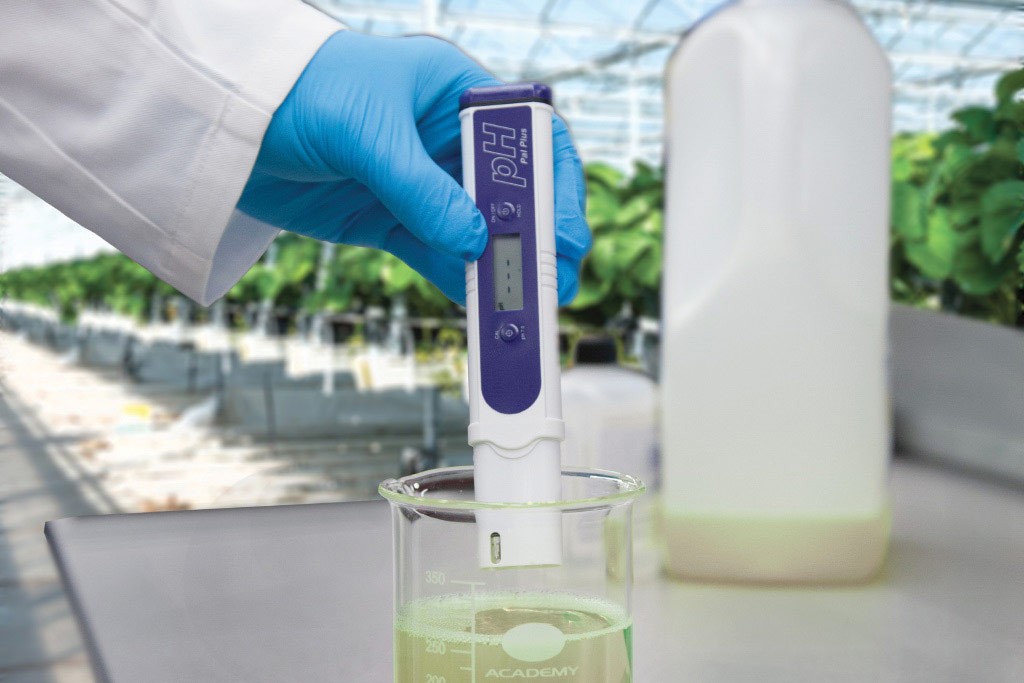A Simple Guide to pH Meters

In this article, we will be discussing pH meters, their functions, and how to calibrate them. We will also be exploring the different types of pH meters available in the market and which one is best suited for your needs. So, whether you are a scientist, a food processor, or a pool owner, this guide will provide you with all the information you need to know about pH meters.
What is a pH meter?
A pH meter is an instrument that is used to measure the acidity or alkalinity of a water-based solution. It measures on a scale of 0-14, with 7 being neutral, 0 the most acidic and 14 the most alkaline.
How does a pH meter work?
An acidic liquid has an increased amount of positively charged hydrogen ions in comparison to an alkaline solution, making it more capable of producing an electric current. pH meters work by measuring the electrical potential (voltage) of a solution.
Most pH testers contain two probes: a glass measuring electrode and a reference electrode. The glass electrode contains a substance, typically potassium chloride, which has a neutral pH of 7. The instrument measures the voltage difference between the neutral solution in the glass electrode and the solution being tested. The difference is then converted into a pH value.
What are pH buffers?
pH buffers are solutions that have a specific pH value. In some applications, buffer solutions can be used to keep the pH value of a solution constant, or they can be used to calibrate a pH tester.
How to calibrate a pH meter?
pH testers are highly prone to drift and require daily calibration for many applications. Therefore, most pH meters have a calibration function that will automatically recalibrate the instrument when used with a pH buffer. This process is also known as standardisation.
To use a buffer solution to recalibrate a pH meter, simply insert the pH probe into the solution and press the calibration button. Buffer solutions can be purchased in a range of pH values. A neural solution with a pH of 7 is typically used, but some pH meters or applications will require a two-point calibration method using an additional buffer solution with a different pH value. You can select a solution with an acidic or alkaline solution depending on your application.
Does temperature affect pH?
An increase in temperature typically decreases pH readings and vice versa. However, a temperature change doesn’t mean that the solution has actually become more alkaline or acidic. The solution will only become more acidic when the amount of hydrogen ions surpasses the number of hydroxide ions, regardless of the increase in hydrogen ions.
As a result, temperature needs to be taken into consideration when measuring pH. Many pH metres will measure the temperature and use this to either automatically or manually adjust the pH reading to compensate for temperature differences, providing a more accurate reading.
How to take a pH measurement of a semi-solid?
The glass bulb of a pH electrode needs to be fully submerged to get an accurate reading. Therefore, when taking the measurement of a semi-solid such as soil or meat, users can make a slurry or paste by mixing the substance with deionised water. This will enable an accurate pH measurement.
Which pH meter is best?
We’ve selected three of our favourite pH meters for varying budgets and applications below. All of our pH testers that are made in the UK have two-point calibration.
pH PAL Plus
Best for: Economical pH measurements

The pH PAL Plus is a pocket pH tester ideal for food processing and water testing applications. Simple and easy to use, it features an automatic recalibration function when used in conjunction with a 7.00 pH buffer solution. The display hold function makes it easy to pause and record readings.
8000 pH Meter
Best for: Interchangeable electrodes

Interchangeable electrodes are a great benefit for those measuring pH. As pH electrodes can often need replacing, this means it isn’t necessary to replace the whole instrument. For many businesses, this can make them more cost-effective in the long run. In addition, it enables users to purchase specific types of probes required for certain applications, such as knife-shaped electrodes for meat and cheese.
Designed and made in the UK, the 8000 digital pH meter has a high accuracy of ±0.05pH and comes with a two-year guarantee. It has a calibration function which can be used in conjunction with pH buffer solutions and a manual temperature compensation function enabling users to adjust the pH readings based on the solution’s temperature.
8100 Plus pH Meter
Best for: waterproof pH measurements

The 8100 Plus is an ideal pH meter for water applications such as swimming pools, as the casing is robust and fully waterproof to IP66/67. With a high accuracy of ±0.02pH, interchangeable electrodes and thermistor temperature probes, and both automatic and manual temperature compensation, the 8100 Plus is an accurate and reliable choice for a wide range of applications.
Designed and made in the UK, this pH meter comes with a two-year guarantee and features a simple calibration function when used in conjunction with pH buffer solutions.
Summary
In conclusion, pH meters are essential instruments for measuring the acidity or alkalinity of water-based solutions. They work by measuring the electrical potential produced by the solution being tested and converting it into a pH value. pH meters require frequent calibration using buffer solutions to maintain their accuracy.
When selecting a pH meter, it is important to consider factors such as the application, accuracy, and temperature compensation. With the right pH meter, you can ensure accurate and reliable pH measurements for your specific needs.
You might also like:
The Ultimate Digital Thermometer Guide — Types, Features & Probes
4 Best Garden Thermometers for Greenhouses, Soil & Compost
Behind the Scenes at Electronic Temperature Instruments